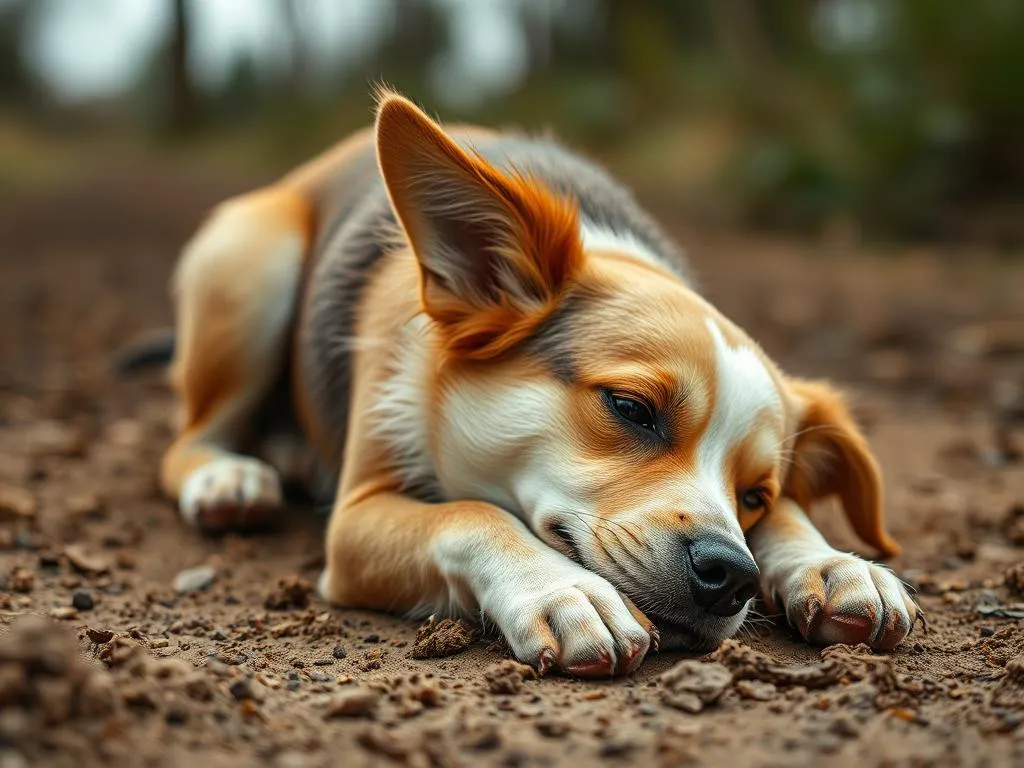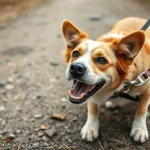
Introduction
As dog owners, we frequently observe our furry friends engaging in a variety of behaviors that can range from adorable to bewildering. Among these behaviors, one that often raises eyebrows is when dogs roll in dirt. Understanding these behaviors is crucial for responsible pet ownership and ensuring that our dogs are happy and healthy.
This article aims to explore the compelling question: why do dogs roll in dirt? We will delve into the underlying motivations behind this behavior, the science that supports it, and what it means for your canine companion. Along the way, we’ll also address concerns and provide tips for managing this often amusing yet puzzling behavior.
Understanding Dog Behavior
The Nature of Dogs
To understand why dogs roll in dirt, we first need to consider their nature. Dogs are descendants of wolves, and their behaviors are often rooted in instinctual actions inherited from their wild ancestors. Throughout history, domestication has shaped dogs into the loyal companions we know today, but many of their behaviors remain unchanged.
The Role of Instincts
Instincts play a significant role in canine behavior. These inherent tendencies guide dogs in various activities, such as hunting, socializing, and grooming. Rolling in dirt can often be traced back to these instinctual behaviors, as dogs explore and interact with their environment in ways that are both natural and necessary.
Reasons Why Dogs Roll in Dirt
Scent Marking
One of the primary reasons dogs roll in dirt is scent marking. Dogs have a keen sense of smell and use their noses to communicate with one another. When a dog rolls in dirt, it may be trying to transfer its scent onto the ground or absorb the scents of other animals. This behavior can serve as a form of social interaction and territory establishment.
Cooling Off
Dogs do not sweat like humans do; instead, they regulate their body temperature through panting and other means. Rolling in dirt can help dogs cool off, especially on hot days. The dirt can absorb moisture and provide a temporary cooling effect, making it an instinctive behavior for dogs seeking relief from the heat.
Scratching an Itch
Sometimes, dogs roll in dirt to relieve an itch or irritation. Skin irritations, allergies, or even the presence of parasites can cause discomfort. If you notice your dog rolling excessively in dirt, it may be worth checking for signs of skin problems or seeking advice from a veterinarian.
Playfulness and Exploration
Play is an essential aspect of a dog’s life, and rolling in dirt can be a playful behavior. Dogs love to explore their surroundings, and dirt offers a stimulating texture and scent. Engaging in this behavior allows dogs to have fun while connecting with their environment.
Mimicking Wild Behavior
Dogs often mimic behaviors exhibited by their wild ancestors. In the wild, rolling in dirt or grass can serve several purposes, including masking their scent from potential prey or parasites. This behavior is rooted in their survival instincts, and even domesticated dogs carry these traits.
The Science Behind Dog Rolling Behavior
Behavioral Studies
Recent studies in canine behavior have shed light on why dogs engage in certain activities, including rolling in dirt. Research indicates that dogs are influenced by their environment and social interactions. For instance, dogs often roll in dirt after encountering intriguing scents, suggesting that their rolling behavior is both instinctual and exploratory.
Dog Psychology
Understanding dog psychology can provide insights into why dogs roll in dirt. Dogs thrive on mental stimulation, and behaviors like rolling can be a way to express excitement or curiosity. Engaging in activities that satisfy their instinctual needs—like rolling—can contribute to their overall well-being.
Addressing Concerns as a Dog Owner
When to Be Concerned
While rolling in dirt can be a harmless and natural behavior, there are times when it may indicate a health issue. Watch for signs that suggest discomfort or skin problems, such as excessive scratching, redness, or bald patches. If your dog’s rolling seems excessive or compulsive, consulting a veterinarian is recommended.
Managing the Behavior
If you’re concerned about your dog rolling too much in dirt, there are ways to manage the behavior. Providing alternative activities, like designated play areas or engaging toys, can redirect their attention. Supervised play in a clean environment can also minimize excessive dirt rolling while allowing your dog to explore and enjoy their surroundings.
Training Techniques
Positive reinforcement training can be effective in managing your dog’s rolling behavior. Rewarding your dog for engaging in desirable activities can reduce the frequency of dirt rolling. Activities that satisfy their instincts—like fetch or scent games—can keep them mentally and physically stimulated.
Fun Facts About Dog Rolling Behavior
Cultural Perspectives
Different cultures perceive dog behavior in unique ways. In some cultures, rolling in dirt is seen as a natural part of a dog’s life, while in others, it’s considered messy or undesirable. Regardless of perspective, it remains a behavior that dog owners encounter across the world.
Anecdotes from Dog Owners
Many dog owners have shared humorous anecdotes about their pets rolling in dirt. One owner recounted how their Labrador retriever would instinctively roll in the mud after every swim, emerging as a muddy bundle of joy. Such stories highlight the playful nature of dogs and their love for adventure.
Popular Dog Breeds Known for This Behavior
Certain breeds exhibit a higher tendency to roll in dirt. Breeds like Labrador Retrievers, Beagles, and Terriers are known for their playful and exploratory nature. Their characteristics often lead them to engage in behaviors like rolling, contributing to their reputation as spirited companions.
Conclusion
In summary, understanding why dogs roll in dirt can enhance our relationship with our furry friends. From instinctual behaviors and scent marking to playful exploration and cooling off, dogs have a variety of reasons for this amusing habit. As responsible pet owners, it’s important to observe and understand these behaviors to ensure our dogs lead happy, healthy lives.
Taking the time to appreciate these quirky habits not only deepens our bond with our dogs but also helps us to provide the best care possible. As you observe your dog rolling in dirt, remember that it’s often a reflection of their natural instincts and a testament to their playful spirit. Enjoy these moments, and cherish the unique behaviors that make your canine companion special.









